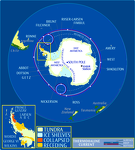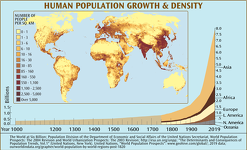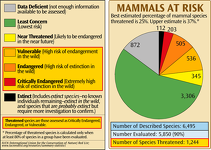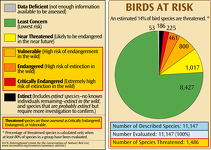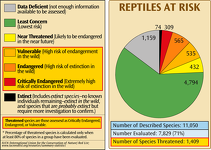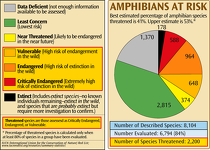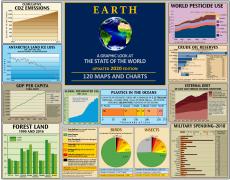Map of Terrestrial and Ocean Biomes
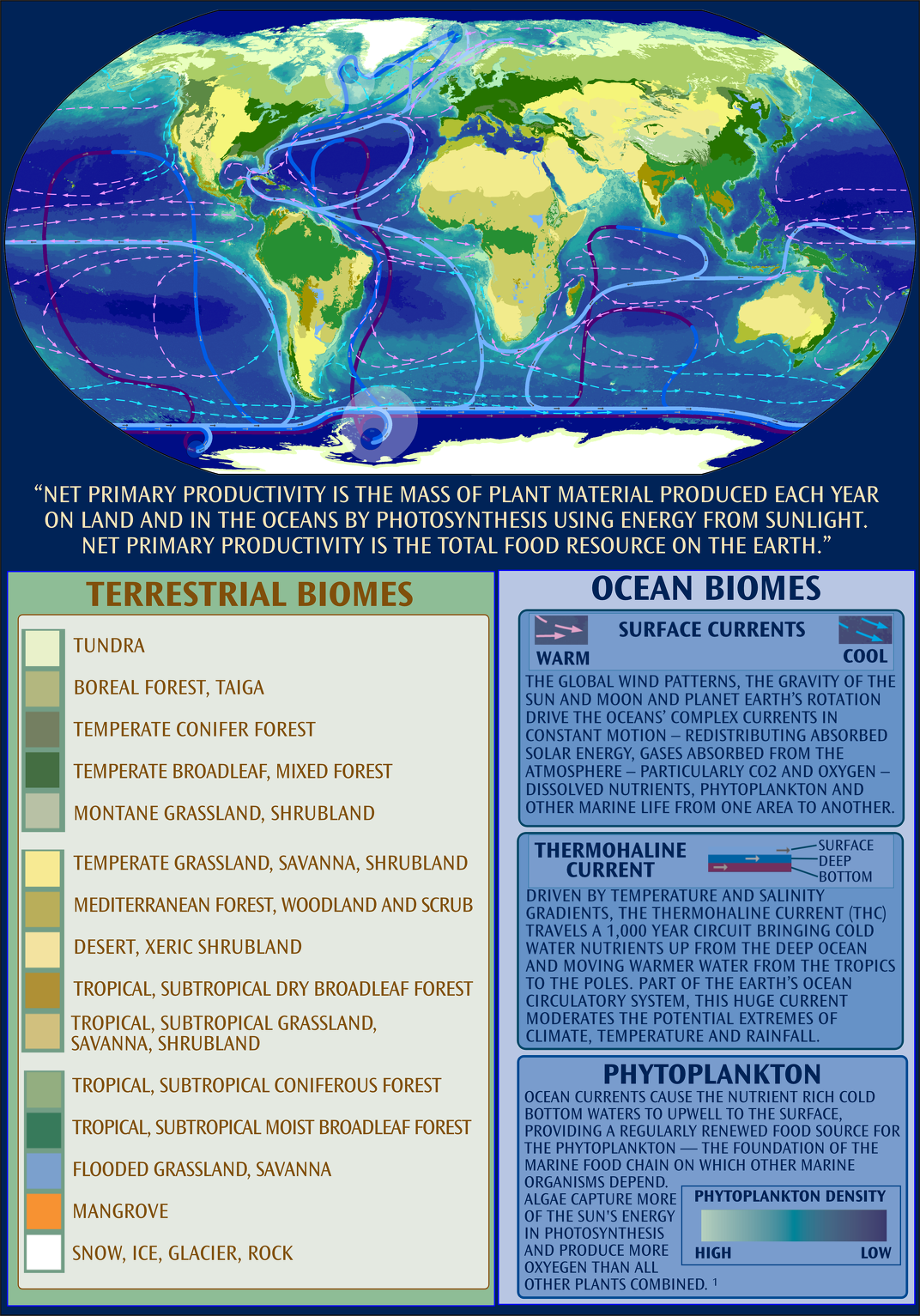
Evidence is growing that the thermohaline circulation, driven by temperature and salinity, could be slowed or stopped by cold fresh water inputs to the Arctic and North Atlantic oceans, diluting the salt concentration in the ocean. This could occur if warming is sufficient to cause large scale melting of Arctic sea ice and the Greenland ice sheet. Such a change in the current may be gradual (over centuries) or very rapid (over a few years). Either would cause planet wide changes in climate. This effect may be part of what starts and stops the ice ages. The land in the Northern Hemisphere has been unfrozen for less than half of the last 400,000 years. In 2005, it was noted that the net flow of the thermohaline circulation had slowed by 30% between 1957 and 2004 (a short time frame relative to global events).
Sources
Gaia, An Atlas of Planet Management; globalchange.umich.edu/globalchange2/current/ lectures/fisheries/fisheries.htm; Ecosystem and Biodiversity
Text Source: Environmental Research Foundation, ejnet.org/rachel/rhwn256.htm
Christian Science Monitor, “Tiniest Creatures in the World Reveal Health of Oceans”
Slowing of the Atlantic meridional overturning circulation at 25° N. Nature 438, 655–657 (2005), Bryden, H., Longworth, H. & Cunningham, S. https://doi.org/10.1038/nature04385
Tags: terrestrial biomes, net productivity, oceans, currents, thermohaline, phytoplankton, forests, terrestrial and ocean biomes, global-ecology
Sign up for EARTH Dispatches
Enter you email below to get jaw dropping charts and maps delivered straight to your inbox.
Get the EARTH presentation
A 150 page high-resolution PDF containing all updated maps, charts and data on EARTH website; use as an information-packed educational slide show, printed booklet or a set of single-page handouts.
Learn More
